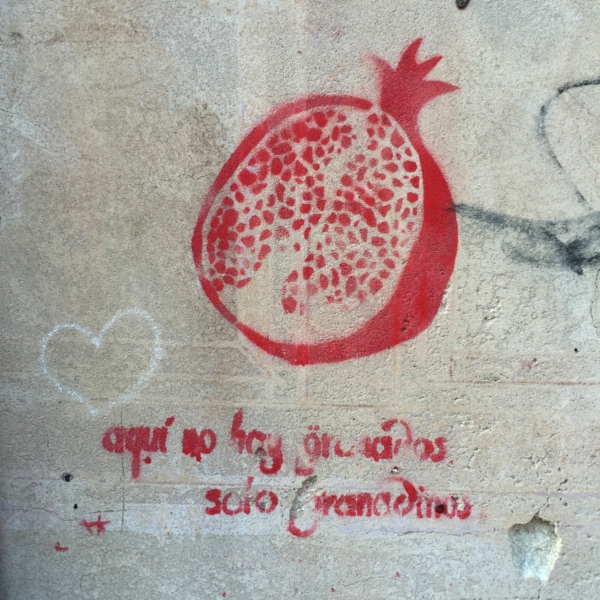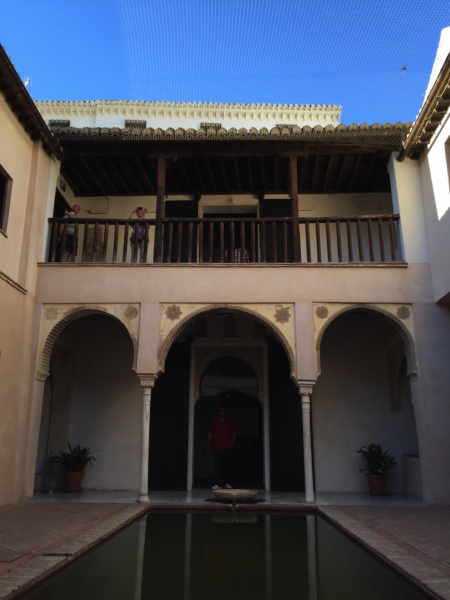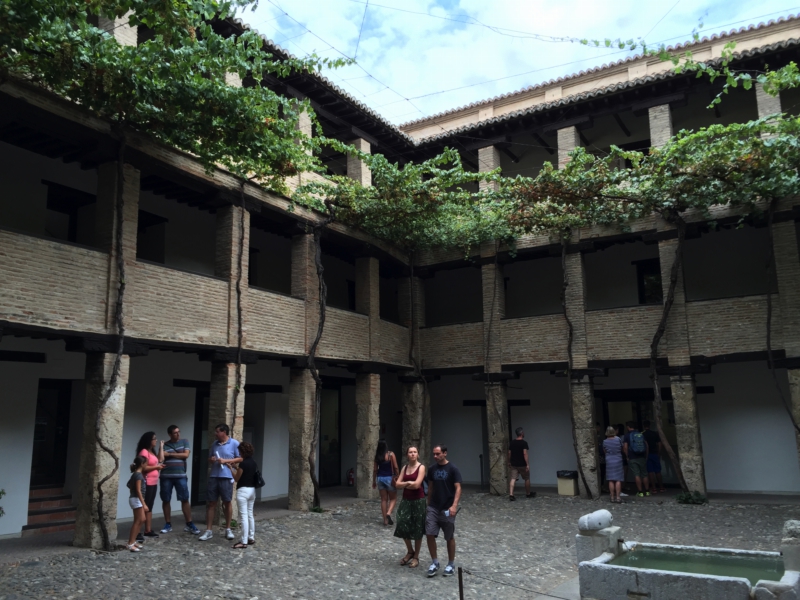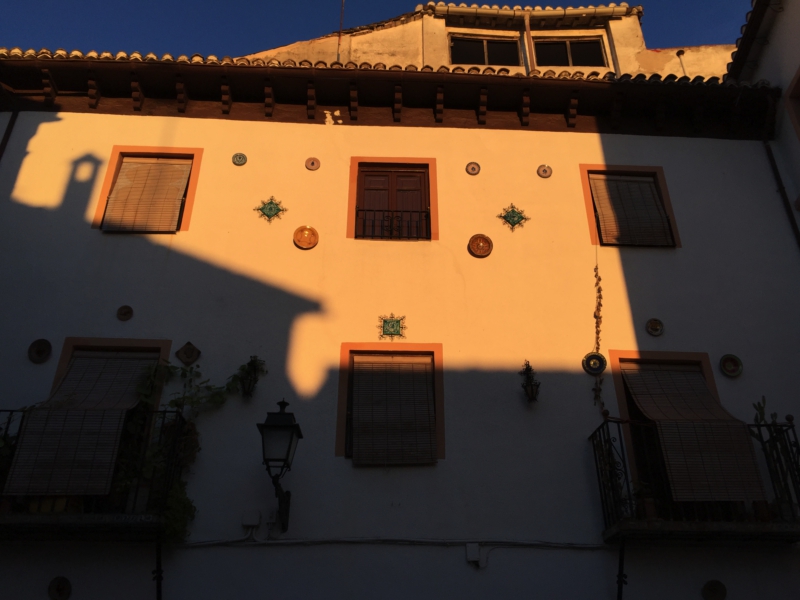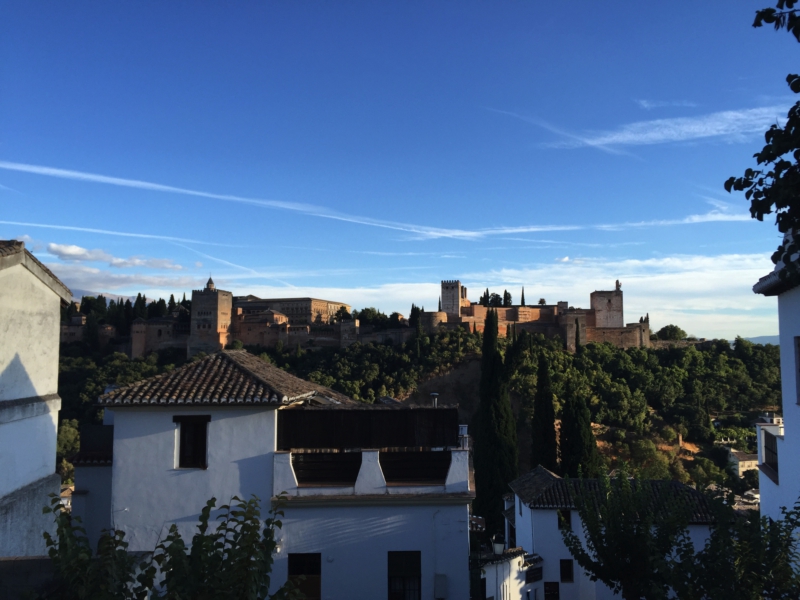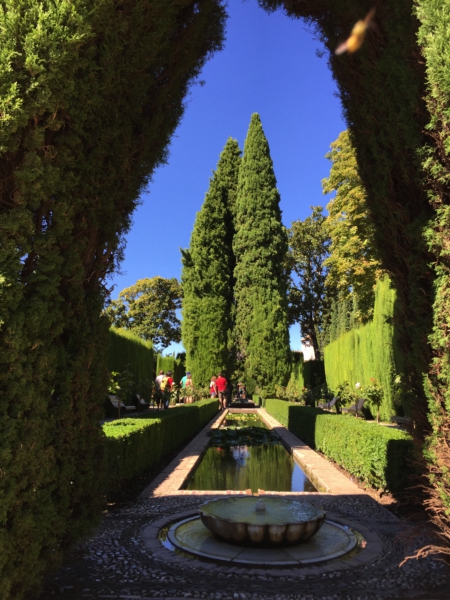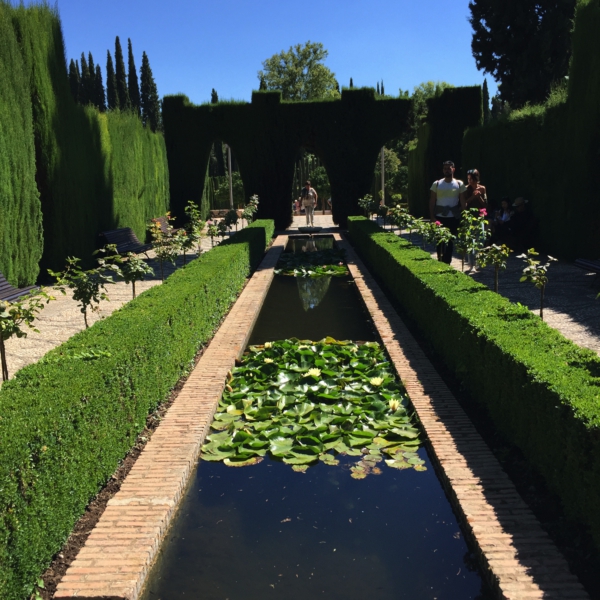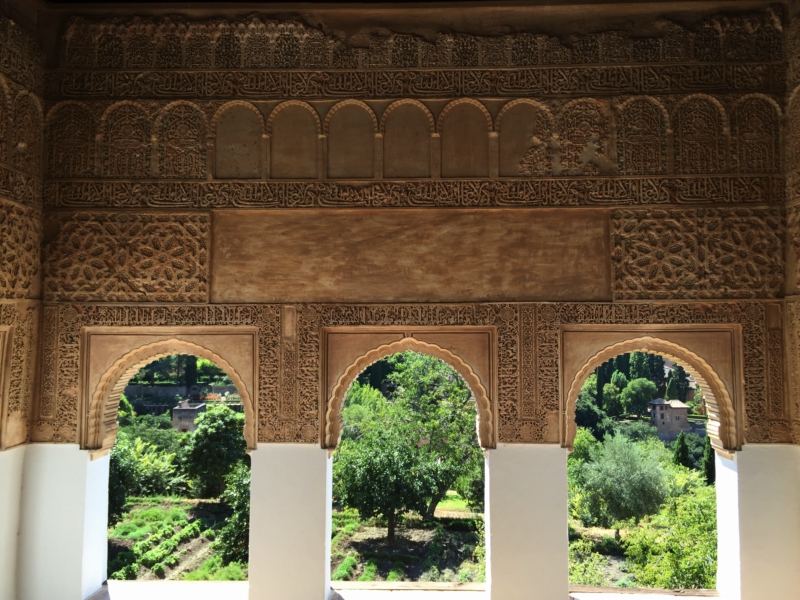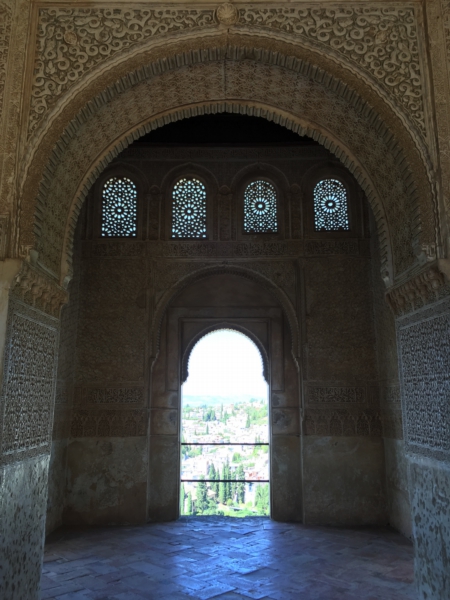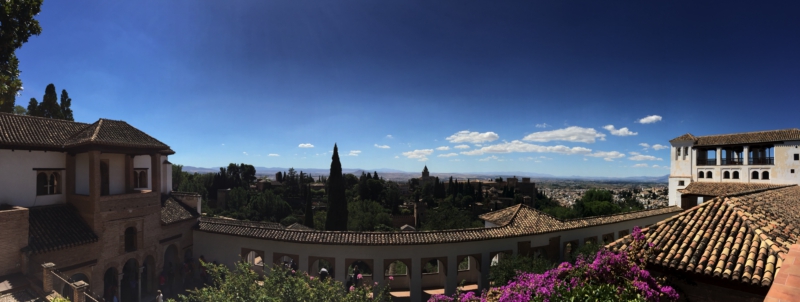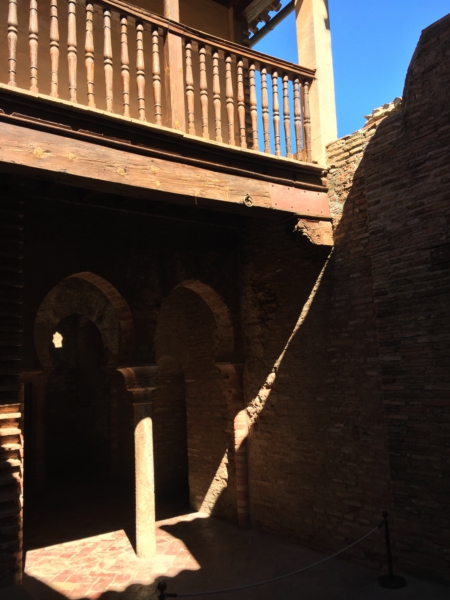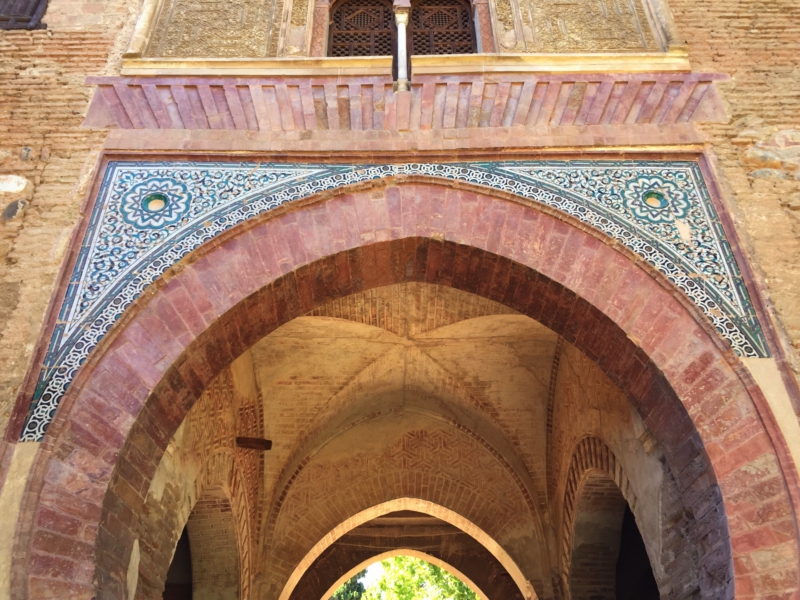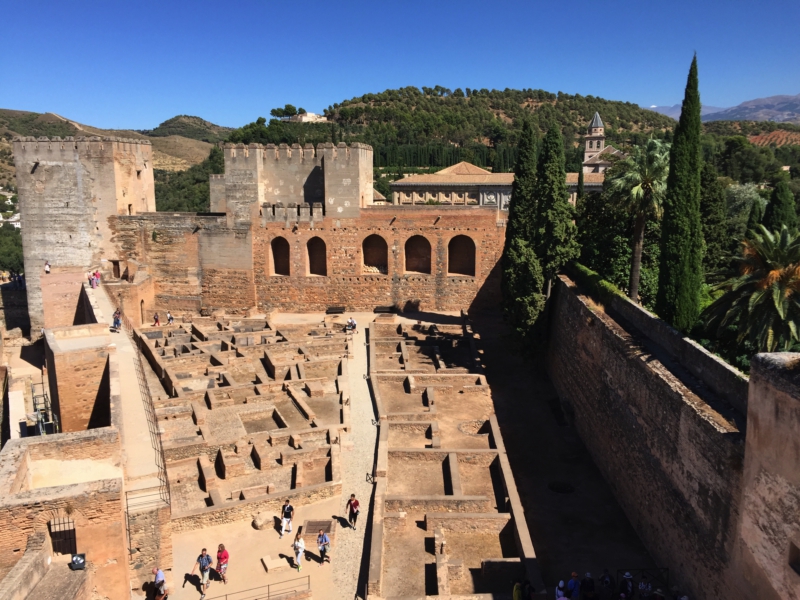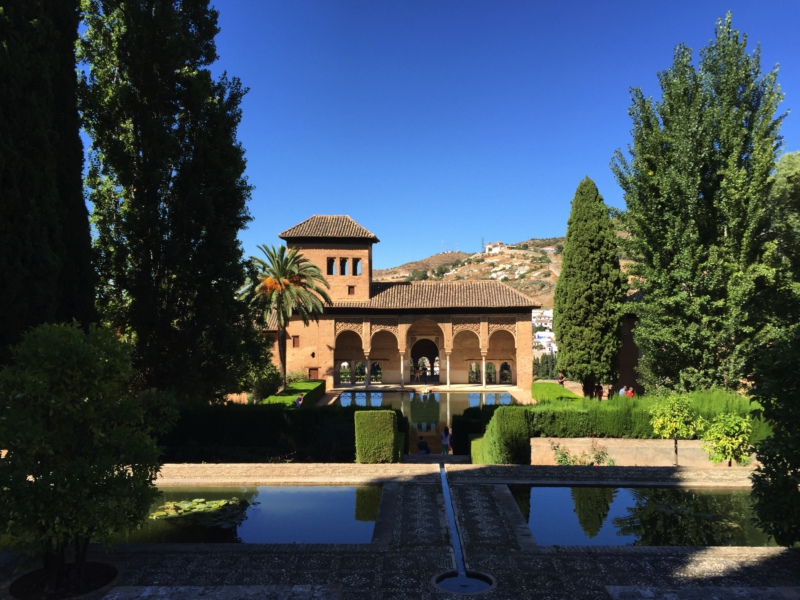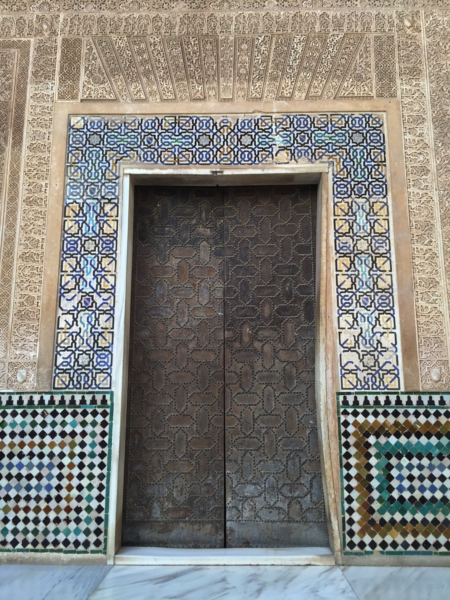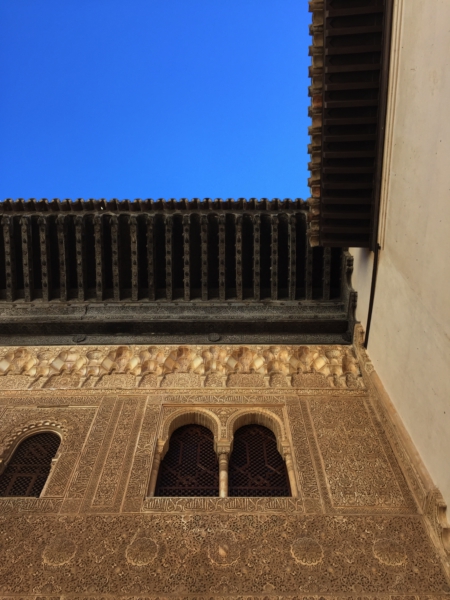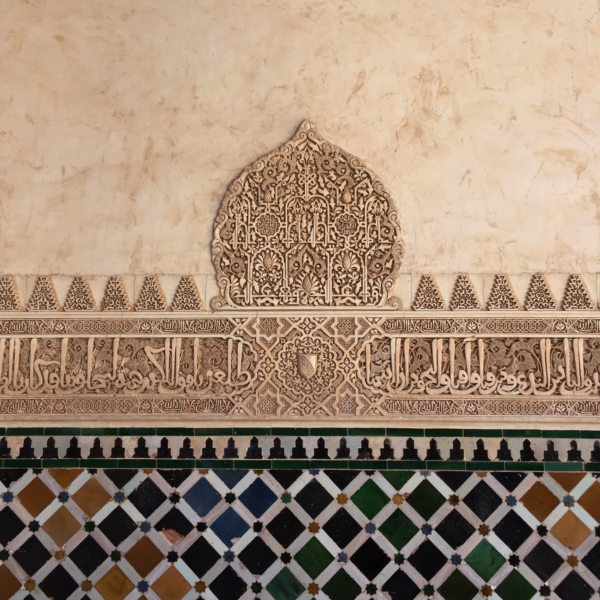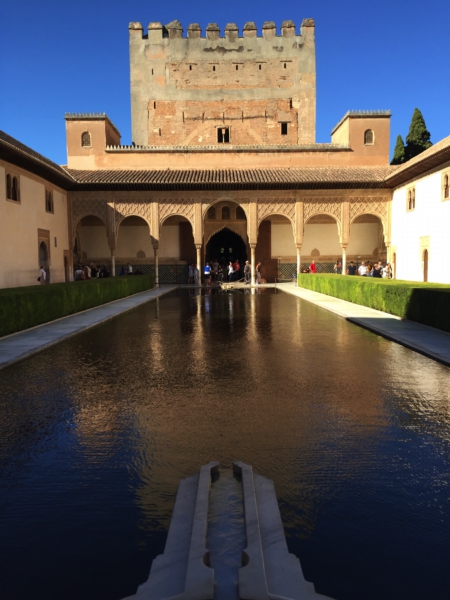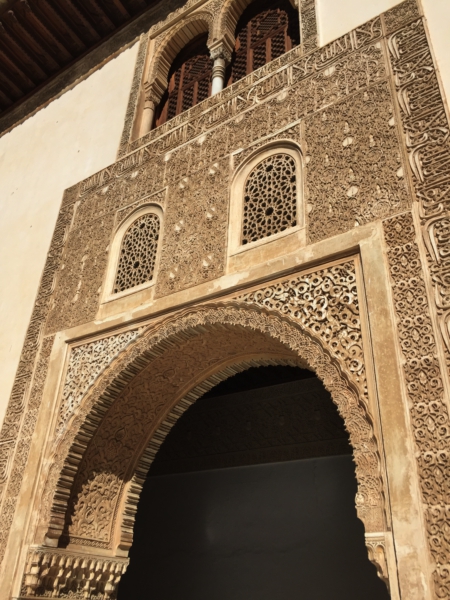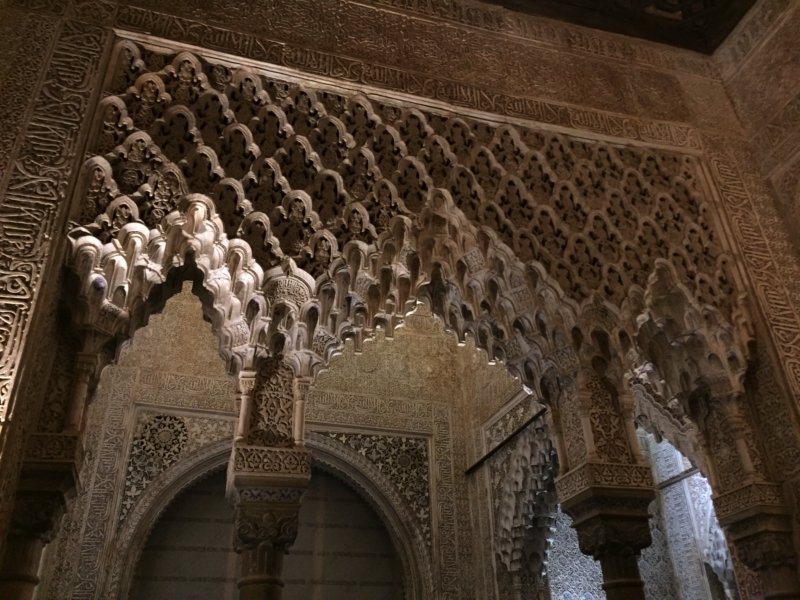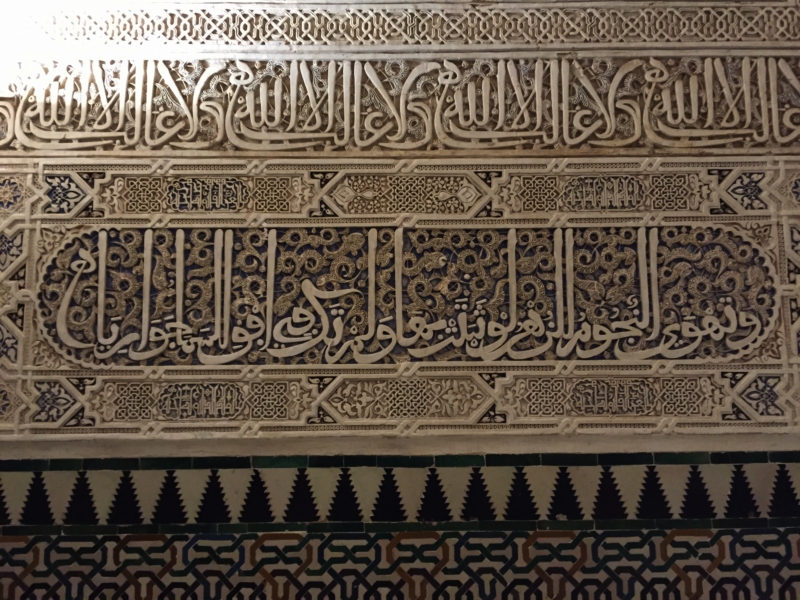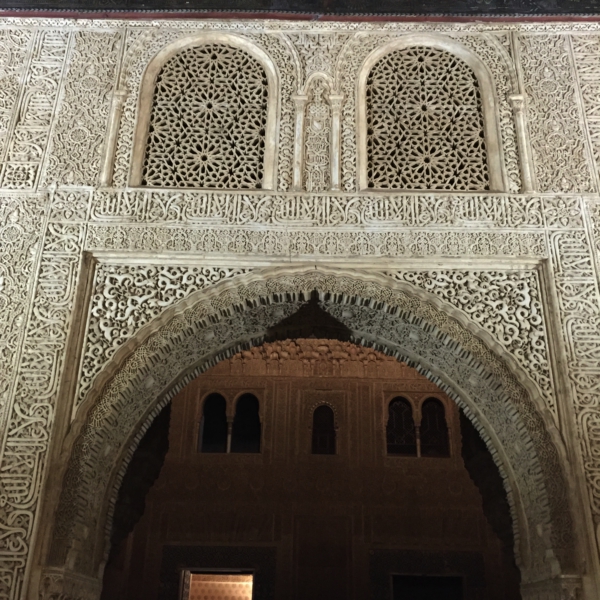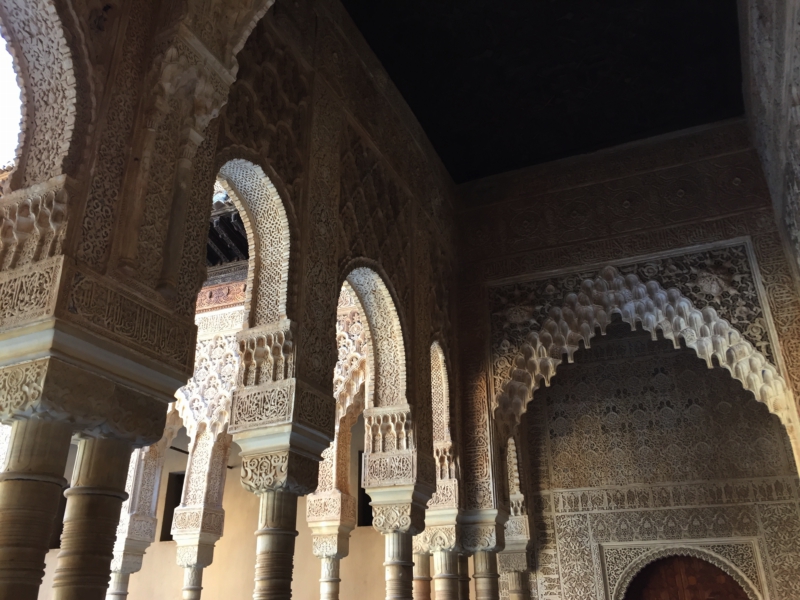Sacromonte is one of the two most interesting neighborhoods in Granada, because it’s where the Gypsies lived in caves and partially still do. Here they were outside the old city walls and outside of the city’s control and were able to get to products and supplies before they were taxed and make deals with merchants and traders coming to the city. It’s also one of the birth places of Flamenco and one of the only places you can still watch Gypsies dancing flamenco in the caves. I didn’t get a chance to see this live myself, but I heard from others that the shows in the caves are very “real” because the caves are so small and you are sitting right in front of the singer or dances and can feel their feet stomping on the floor and hear them breathing as they express themselves through song and dance. The acoustics of the cave are also very captivating as the flamenco style clapping is echoed be the cave’s walls.
So the tour of Sacromonte was all about the caves obviously and we went up to the hill or mountain were Gypsies, students and tourists still inhabit the caves, which have no running water or electricity, but a very alternative vibe to them. The caves are not officially registered as housing and so don’t really belong to anyone, so if you find an empty one you can just use it as long as you need to. Along the way above most caves you find a lot of prickly pear cacti planted, basically to ward off kids & people from walking across the cave’s roof or building above another cave, since the earth here could be quite fragile.
The other interesting neighborhood is Albayzin, which is where the muslims ended up settling after the re-conquest of Granada. It’s a beautiful neighborhood with very plain looking houses from the outside, but once you are inside, it was like living in a palace. These kind of houses were called Carmens and all had elaborate courtyards and gardens on the inside. The reminded me very much of the Riad’s you can find in Morocco, which are also built like that. The streets here were very narrow and winding, and were designed like that to have as much shade during the day as possible for the people on the streets, since the temperatures can get very hot in the summer. That’s also the reason all the houses are painted white. The city gates in this neighborhood however, where tight and went around a corner to make them easier to defend in case of attack. One of the highlights of this neighborhood is the Plaza Larga square, which is very lively throughout the day and where you could apparently still get the “local Granada vibe”. All the houses around this square were decorated with the famous ceramics painted in green and blue, as it was hundreds of years ago when the Moors used to live there. You can also get some great views of Alhambra from the top of the neighborhood.
Alhambra is probably the crown of all of the Islamic rule in the region and was also the last to be reconquested by the christians. It’s basically a complex of several palaces from different Moor Dynasties, with a summer Palace and gardens (Generalife) attached to the complex. And you may wonder, why have a Summer Palace so close to the “normal” Palace?
Well it actually makes a huge difference in temperature and you can only truly feel it when you visit for yourself. The summer palace and gardens are a few degrees cooler and the shade from the gardens help keep the temperature cooler.
To visit Alhambra you definitely need to book your ticket in advance, which I did including an extra night tour of the more popular Nasrid Palace. To be honest though, I enjoyed it more during the day. At night it didn’t really feel very authentic with all the electric artificial lighting. I also enjoyed it a lot more after the phone battery died, because I stopped taking pictures then. It’s difficult to be there and willingly not take any photos because all the palaces are so beautifully and intricately decorated. It’s really impressive to see the huge palaces, doors and ceiling, decorated in such small and careful detail.
It was a real treat to see Alhambra, but it shouldn’t be the only reason to visit Granada. The city really has so much more to offer and a great vibe that can make it worthwhile to visit even if you decide to skip Alhambra.
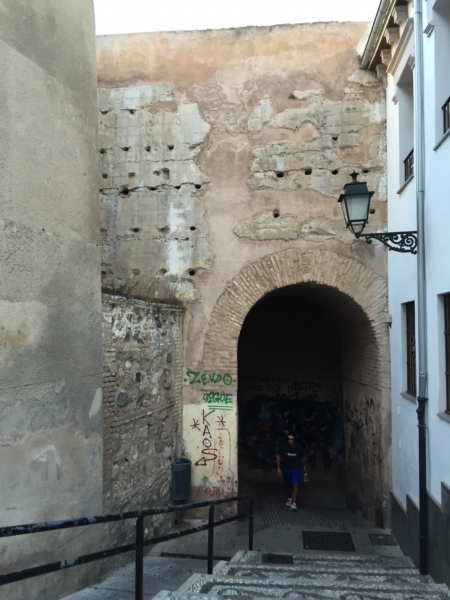
This was one of the bent city gates, so to get out in this case you have to go through it and take a right.
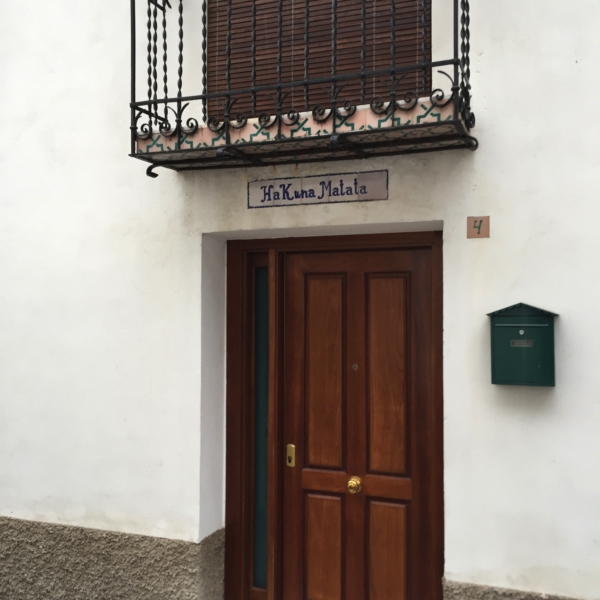
Several houses in Albayzin have interesting names like this one, some with a background story and some without.

They used the stairs to transport water for irrigating the gardens and to add a different decorative touch to match the fountains.

Here you see Alcazaba, which is one of the oldest buildings in the Alhambra complex and was a military fortress.

After the reconquest, Charles the 5th wanted to have his own palace inside the Alhambra complex and this colosseum style palace is the result. It doesn’t really match any of the architecture in the rest of the complex though.



